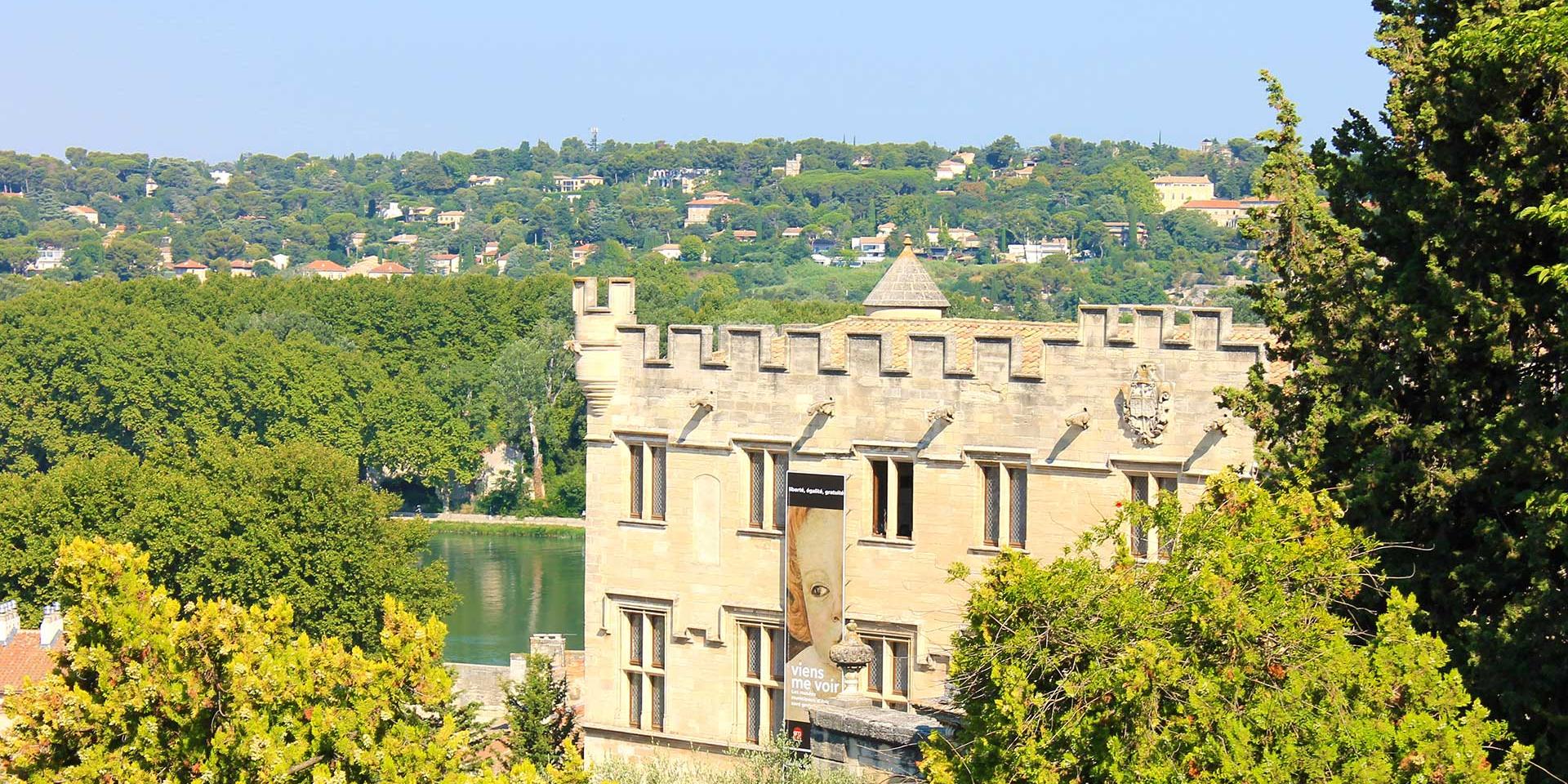Labelled “Musée de France”, the Petit Palais of Avignon houses masterpieces of medieval and Renaissance art. Its collections include more than 300 paintings by the primitive Italians and priceless medieval sculptures. The museum owes its name to the former Archbishops’ Palace, the walls of which it now occupies.

Petit Palais, Avignon
The Archbishop’s Palace in Avignon
The Petit Palais is the familiar name given to the residence of the archbishops of Avignon, who ruled the city and the territories of the Comtat Venaissin in the name of the pope until the French Revolution. This nickname is due to the immediate proximity of the Palais des Papes (Popes’ Palace), which is even more imposing. Built in several successive building campaigns between the 14th and 18th centuries, the Petit Palais has a surface area of nearly 3,000 m² and two courtyards.
Divided into lots and rented to a tavern keeper, merchants and craftsmen, and even transformed for a time into barracks, the Petit Palais experienced a period of dilapidation during much of the 19th century. For a time, it regained a religious function, housing a minor seminary, before becoming an upper primary school until 1960.
It was in the 1960s that the building changed its destination and regained its superb appearance. The restoration, entrusted to Jean Sonnier, Chief Architect of Historical Monuments, allowed it to be transformed into a museum. The successive arrangements are removed, and the aspects related to the construction phase of the Middle Ages are highlighted. The buildings became once again superb showcases worthy of hosting the most precious works. The Petit Palais museum of Avignon houses several hundred works divided into three large collections.
Italian paintings
The museum’s collection of Italian paintings owes its wealth to the work of a dedicated 19th-century collector, the Marquis Campana. This rich Roman aristocrat, who was passionate about art and ancient remains, was one of the major collectors of his century. His resounding bankruptcy led to the dispersal of his collections, part of which Napoleon III’s France was able to acquire in 1860. The Petit Palais now houses 350 paintings from the late Middle Ages and the Renaissance from this Campana collection, deposited by the Louvre Museum.
Many masterpieces await you, such as Madonna and Child by Sandro Botticelli, created in the 15th century, a representation of St Bernadin of Siena painted by Bartolomeo della Gatta around 1448, or Saint Lucy, painted by Carlo Crivelli in the 1430’s. Other great Italian painters in this collection include Lorenzo Vecchietta, Niccolò da Foligno, Antoniazzo Romano, Jacopo del Sellaio and Louis Brea.
Sculptures from the Middle Ages
During your visit, you can also discover and admire many sculptures from the late Middle Ages. These lapidary works include several capitals from the cloister of Avignon Cathedral, as well as recumbent statues representing the deceased lying down. The Petit Palais museum houses, among other masterpieces, the tomb of Pope Urban V, or several alabaster statues from the tomb of Pope John XXII, representing a deacon or a religious holding a missal. Bas-reliefs are also part of the collection, such as Signe des Gémeaux (Sign of Gemini). One of the major works in the collection remains the impressive tomb of Cardinal Jean de Lagrange.
Paintings of the Avignon School
By settling there for almost a century, the popes made Avignon a center of attraction for the entire Christian West. Artists, attracted by the prestige of the place and the pomp of the papal and cardinal courts, came from Northern Europe, France, Spain and Italy to put their art at the service of the Princes of the Church. Between Italian and Flemish influences, several generations of painters have brought to Avignon a home of artistic creation of great value.
Avignon School was created by painters such as Josse Lieferinxe, Enguerrand Quarton or Nicolas Dipre, and many others whose names have not gone down in history. This original focus is characterized in particular by the simplicity of the composition, with a geometrization of volumes, a boldness in the use of color, a light that is both clear and directed.
Exhibitions
Exhibitions and events are regularly organized at the Petit Palais in Avignon. A focus is sometimes made on a work of art, as was the case with the exhibition Triptyque de Venasque, Renaissance d’un chef d’œuvre (Venasque Triptych, Renaissance of a Masterpiece).
The Calvet Foundation also regularly organizes drawing competitions. It also participates in the Long Night of Museums.
Calvet Foundation
An 18th-century art collector, Esprit Calvet bequeathed his entire collection of works of art and his real estate to the State when he died in 1810. Napoleon I set up a foundation in 1811 to manage this heritage. Numerous legacies and donations have enriched the heritage of the Calvet Foundation, whose financial independence is ensured in particular by its property holdings.
Today, the foundation manages eight cultural, historical or artistic establishments: the Calvet Library, the Petit Palais museum of Avignon, the Médaillier Calvet, the Requien Museum and library, the Calvet Museum, the Archaeological Museum of Hôtel-Dieu, the Jouve and Judeo-Comtadin Museums.
Informations pratiques
- Opening days: Open six days a week. Closed every Tuesday and on January 1, May 1 and December 25.
- Schedule: from 10:00 a.m. to 1:00 p.m. and from 2:00 p.m. to 6:00 p.m.
- Tarifs: access to the permanent collections is free
- Address: palais des archevêques – place du palais des papes – 84000 Avignon
- Web : http://www.petit-palais.org/